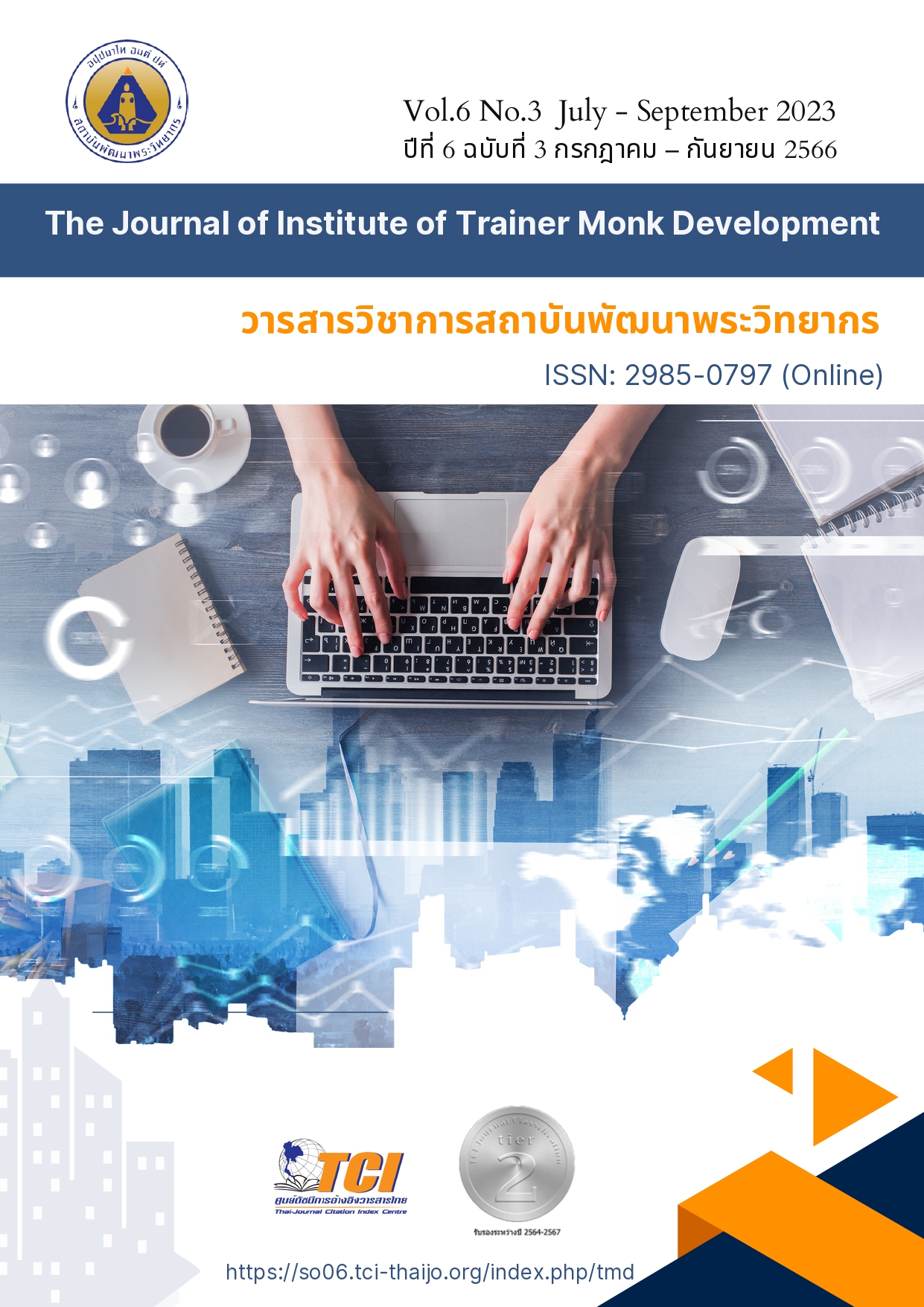A Study of Using the Gamification Affecting the Motivation to Improve English Reading Comprehension Skills of Third Grade Students
Main Article Content
Abstract
The purpose of this research was to investigate the use of the gamification if it affected the third grade students motivation to improve their English reading comprehension skills. The sample of this research include thirty-one primary school students at Amnuaykanoksirianusorn school under the Bangna District Office Bangkok in the second semester of the 2022 academic year, selected through the use of the purposive sampling method. The instrument used to collect data was a questionnaire. The statistics used in data analysis were frequency, percent, mean, and standard deviation. The research results of a study of using the gamification affecting the motivation to improve English reading comprehension skills of grade 3 students were that overall, at a high level the top 3 items of the reported learning atmosphere were free, warm, and relaxed. The teacher’s friendliness with the students encouraged students to fully express themselves in the language. Besides, the amount of reading activity content was appropriate.
Article Details

This work is licensed under a Creative Commons Attribution-NonCommercial-NoDerivatives 4.0 International License.
บทความที่ได้รับการตีพิมพ์เป็นลิขสิทธิ์ของวารสารวิชาการสถาบันพัฒนาพระวิทยากร
ข้อความที่ปรากฎอยู่ในบทความที่ได้รับการตีพิมพ์ในวารสาร ถือเป็นความรับผิดชอบของผู้เขียนบทความ และข้อคิดเห็นนั้นไม่ถือว่าเป็นทัศนะและความรับผิดชอบของกองบรรณาธิการวารสารวิชาการสถาบันพัฒนาพระวิทยากร
References
กิตติ ประเสริฐสุข. (2555). ASEAN Insight: ทักษะภาษาอังกฤษกับอาเซียน. กรุงเทพฯ: โรงพิมพ์กรุงเทพธุรกิจ.
ณัฐพงศ์ มีใจธรรม. (2564). การพัฒนาผลสัมฤทธิ์ทางการเรียนภาษาอังกฤษ โดยใช้เทคนิคเกมมิฟิขเคชั่น (GAMIFICATION) สำหรับนักเรียนชั้นประถมศึกษาปีที่ 5. การศึกษาอิสระ ศึกษาศาสตรมหาบัณฑิต. มหาวิทยาลัยนเรศวร.
วรางคณา แสงธิป. (2564). การพัฒนาการจัดการเรียนรู้แบบเกมมิฟิเคชันร่วมกับวิธีการสอนแบบเน้นภาระงาน เพื่อส่งเสริมความสามารถในการอ่านภาษาอังกฤษเพื่อความเข้าใจและแรงจูงใจในการเรียน ของนักเรียนชั้นมัธยมศึกษาปีที่ 3. วิทยานิพนธ์ศึกษาศาสตรมหาบัณฑิต. มหาวิทยาลัยศิลปากร.
วิลาวัลย์ อินทร์ชำนาญ. (2561). การออกแบบเกมมิฟิเคชัน: Gamification Design. กรุงเทพฯ : มหาวิทยาลัยธุรกิจบัณฑิตย์.
สำนักงานเลขาธิการสภาการศึกษา. (2562). กรอบสมรรถนะหลักนักเรียนระดับการศึกษาขั้นพื้นฐานและระดับประถมศึกษาตอนต้น (ป.1-3). กรุงเทพมหานคร: เซ็นจูรี่.
สุพัตรา มูลละออง. (2558). การพัฒนาแบบฝึกเสริมทักษะการอ่านเพื่อความเข้าใจโดยใช้การอ่านกลวิธีแบบร่วมมือ และเทคนิคแผนผังกราฟิก สำหรับนักเรียนชั้นมัธยมศึกษาปีที่ 3 โรงเรียนสระยายโสมวิทยา อำเภออู่ทอง จังหวัดสุพรรณบุรี. วิทยานิพนธ์ปริญญาศึกษาศาสตรมหาบัณฑิต. มหาวิทยาลัยศิลปากร.
สุรางศรี วิเศษ. (2553). พัฒนาการอ่านและการเขียน Reading and writing skill development. ปทุมธานี: สำนักพิมพ์มหาวิทยาลัยรังสิต.
Fabricatore, C., & Lopez, x. (2012). Sustainability Learning through Gaming: An Exploratory Study. Electronic Journal of e-Learning (EJEL), (10)(2): 209-222.
Francisco, J. F. F. (2015). Using Gamification to Enhance Second Language Learning. Retrieved September 30, 2020 from https://files.eric.ed.gov/fulltext/E.J 1065005.pdf
Glover, I. (2013). Play as you learn: gamification as a technique for motivating learners. Conference: World Conference on Educational Multimedia, Hypermedia and Telecommunications. Volume: 1
Kapp, K. M. (2012). The gamification of learning and instruction: game-based methods and strategies for training and education. San Francisco: Pfeiffer Wiley


